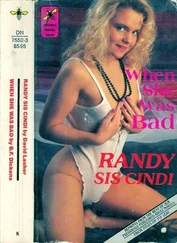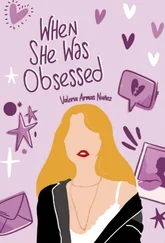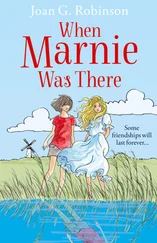Back in the early 1990s, dinosaurs loved the Mothership. The blockbusting success of the raised-awareness action movie Jurassic Park had let loose its computer-generated cast of prehistoric monsters to endorse any number of pre-teen products with their rearing, charging, hissy-fit forms, as well as the film’s eye-catching dinosaur skeleton logo. Which was about as popular as popular culture can get. Cereals and lunch boxes, birthday cakes and pasta shapes – along the shining aisles of the Mothership the dinosaurs ruled again.
And, somehow, dinosaurs were right for the early 1990s. A creature whose brain was its smallest part was unlikely to be wounded by irony. Also, the movie considered the needs of its audience from every angle, thus pre-empting a confusion of intentionality: here, for instance, was a guy being plucked out of a portaloo and having his legs ripped off; on the other hand, here were lots of he-might-be-right-you-know Chaos Theory pronouncements, delivered with seductive fox-like elegance by leather-jacketed sexy scientist Jeff Goldblum. And then there was the eco-message, summed up in breathtaking long-shots of peaceful, pro-organic, Natural Shoe Store, liberal bourgeois vegetarian dinosaurs, grazing en famille on prairies of willowy waving prehistoric pampas grasses.
By the by, the film had introduced the hitherto underused term ‘cloning’ into the broader cultural discourse, which turned out to be absolutely on-the-button to define a general trend. As the dinosaurs in Jurassic Park had been cloned from preserved DNA to provide sensational infotainment – reactivating a history in suspension, so to speak – so many of the cultural products of the 1990s, from TV programmes to graphic design, would turn out to be cloned from, as it were, cultural DNA. Here was classic post-modernism in action – authorless signs transmitted through filters of meaning, brought to life in the labs of logo and cultural production.
Cultural cloning … now there was a thought. If you could just identify the most efficient little gobbets of an image or an idea – well, you could simply think of it as sampling, taking out the best bits and doing them like mad. Fads such as these were as old as the hills, of course (Hollywood cloning its stars, England its Beat groups) but the sheer extent of media in the 1990s – when the ‘mass’ in ‘mass media’ appeared to amplify a thousandfold on endlessly replicating channels, added to a burgeoning cultural conservatism – would make for an especially arid monoculture, based largely on promotability and marketing. The trick, for cultural practitioners, was to identify which of the principal species they were cloned from, and not try anything surprising. Culture could be led by market research, and very often was.
(Also, in the Nineties, the culture of superlatives demanded the most popular bits – the fondant centres, the strawberry cream, garlic butter – were simply lifted out of their context, so they became little more than a gooey mass. A diet of fondant centre …)
An example would be the extraordinary success of Helen Fielding’s romantic comedy, Bridget Jones’s Diary : the success of her idea was multi-cloned across fiction, film, advertising and print media, established as an entire demographic model and then used to sell the idea of Bridget Jonesness back to people who’d bought it in the first place. At the wallet end of marketing the proof of the cloning would be found in a multi-million-pound cosmetics promotion which offered ‘a Bridget Jones-style Diary’.
On terms such as these the idea of originality per se had become subordinate to the cloning process, and the baby dinosaurs crept out of their broken shells to rule the Earth again.
Cloned Media
Prior to the latest cloning boom in ‘zoo media’ (Chris Evans et al. to ‘The Girlie Show’) and ‘reality TV’, the process has perhaps reached its apotheosis with the phenomenal, pan-media, super-cloned success of Irvine Welsh’s novel Trainspotting . What began as a neo-realistic account of life and living death among Edinburgh drug addicts – couched in the vernacular tradition of James Kelman’s Booker Prize-winning novel, How Late It was, How Late – has become, by way of the movie, the soundtrack CD, the t-shirt and the advertising campaign, a form of media shorthand to signify Youth in general.
The greatest irony, perhaps, of this conversion of a novel into a free-floating logo for youthfulness was the appropriation of the orange and white graphics, made famous by the film of Trainspotting , to advertise the winter sale in French Connection’s chain of high street boutiques. There is a somewhat spooky connection between the desire to buy a ribbed brown cardigan and the need to identify, as a consumer, with the desperation of a heroin addict. And the proof of the cloning process would be inadvertently sealed by Sarah Champion, in her introduction to Disco Biscuits: New Fictions for the Chemical Generation , where she wrote, ‘we now have Trainspotting , the attitude’.
The cloning process, by converting issues and substance into the short-term safe harbour of provenly marketable ‘attitude’, has created a tendency within contemporary media – and even the broader span of contemporary culture – to fear any innovation that does not correspond to whatever attitude happens to be riding high. And at this point, cultural phenomena become merely vessels – the medium is the message, after all. Too true, Marshall!
Similarly, our decade-long love affair with mass retro-culture within the poppier packaging of just about everything (the cloning of suspended styles) would prompt the suggestion (with more than just a pulse of real panic in there) that at this rate we would ‘run out past’ by 2005 – that culture was faced with a chronic ‘retro shortage’. (A further Jeff Noonism would be the idea of ‘Post-Future’, a point at which the Future – as a thing, concept, temporal or descriptive – no longer existed. Thus there would also be ‘post-future kids’, for whom the idea of fashionability, modernity or keeping-up-to-speed would be utterly – and, you imagined, blissfully – meaningless.)
The endless cycles of pop cultural revivalism – the imagery of modern culture as a database and dressing-up box – describe the extent of retro-culture. You could also throw in the importance to Interior Design in the 1990s of Mid-century Modern styling (the Fifties coming up in price), which was morphed with the brushed-metal and bleached-oak effect of shop-fitting chic to create the basic Loft Look. Out of this came a kind of ‘Pod and Spike’ approach to Lifestyle – Pod being the cocooning impulse to feed on infantilism, and Spike being the exquisite good taste of the tamed avant-garde.
At its most expensive, styling went the whole way to Minimalism: this required lots and lots of open floor space to turn your loft into a gallery (Pod) – one science-fiction exotic cut stem of some spiky flora (Spike), a couple of Whitefriars vases perhaps, and the rest was whiteness. Hence the irony of the urban very rich seeking to define their Lifestyle by vast areas of emptiness – they and their possessions becoming exhibits, an aubergine or a Diptyque perfumed candle (Pod) taking on the aura of sculpture. More often than not, any actual art in a minimalist barn would be screaming how fucked-up it and everything around it was (Spike), or, at the very least, pronouncing an exquisite conundrum of neurotic self-concept.
Tim Noble and Sue Webster
Visceral yet lumpen, lurid yet delicate, the art of Tim Noble and Sue Webster is filled with contradictions. Encountering their work for the first time, a viewer will be struck by its mixture of vivacity and savagery. Mixed messages of love and death, ambition and nihilism, are carried on a style that alternates between cartoon delinquency and a kind of modern baroque.
Читать дальше












